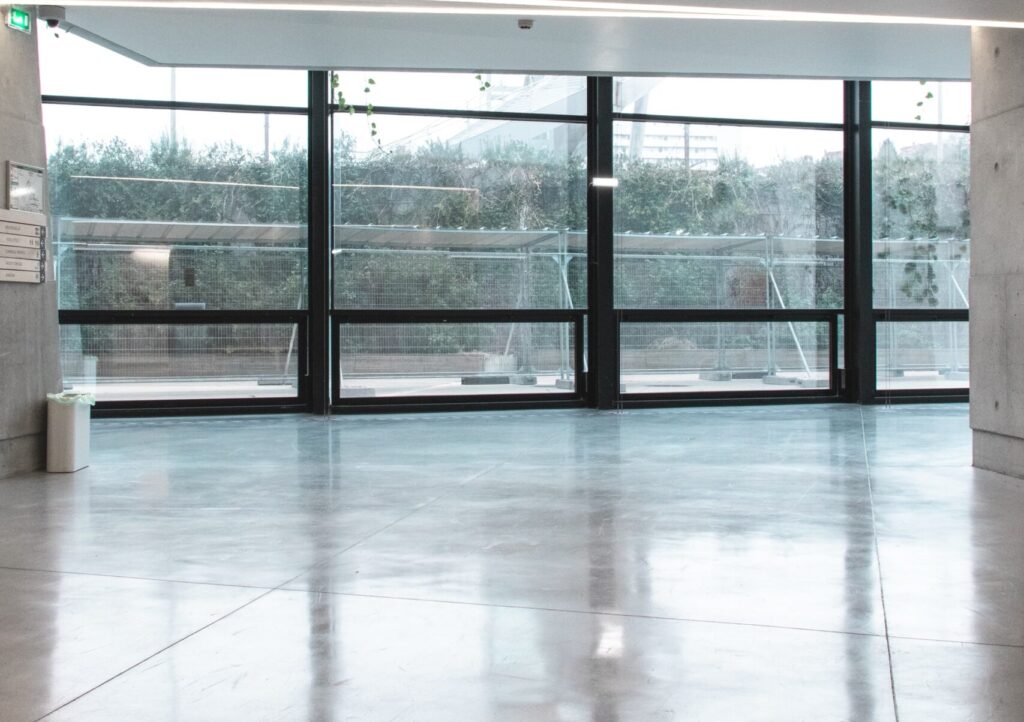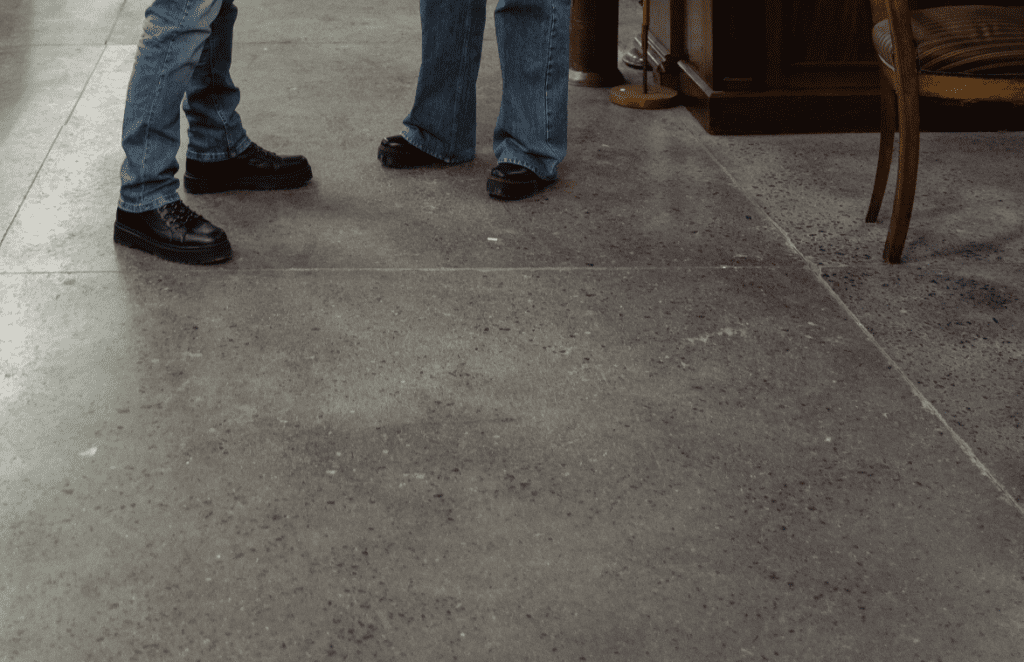Stained concrete is becoming more and more popular due to the rise in modern and rustic interior designs. Did you know that stained concrete floors can actually increase the value of your property?
That’s right. But how do you choose what type of stain to use on your floors?
We’re here to help! Keep reading to learn all about colored concrete, when to use acid stain, and which acid stain colors are available and best suited for your needs.
What Is Acid Stain?
Acid stain is a method of coloring concrete by “staining” the concrete. The end product is a marble-like color on the floor. Bear in mind that acid staining is primarily used for flooring, but vertical concrete such as walls will benefit the most from a mineral stain solution.
While acid stains are tinted in various hues, they also pick up the natural colors of the concrete. So, the final floor color has an earthy and natural look.
Acid stains can be used on both indoor and outdoor floors. They have long been a popular choice among commercial property owners but are now becoming more popular for homes, too, with the rise in modern and rustic interior designs.
How Does Acid Staining Work?
Acid stains penetrate the porous concrete through a chemical reaction. The acid in the stain reacts with the concrete lime and inorganic metal salts. This chemical reaction creates a permanent color change.
Acid stains can be added to the concrete at the concrete plant or broadcasted on already poured concrete floors.
Why Is Acid Staining Best for Floors?
When it comes to colored concrete, there are different types of stains. Acid stains are best-suited for floors, while vertical concrete works better with mineral or water-based stain products.
Acid stains last longer than water-based stains making them great for high-traffic areas like floors. Because it stains the concrete permanently through a chemical reaction with the stone, you don’t have to worry about chipping or peeling (like you would with paint).
Water-based stains are also highly durable solution, but they are best for vertical applications. Because of this base and the science behind these stains, the color options for water-based stains are much larger and bolder.
Water-based stains are best for vertical concrete walls because they can be changed if needed. They also allow for more design options rather than solely the earthy tones you will get with acid-based stains.
Acid Stain Colors and Finishes
Because acid stains are made with metal salts, they tend to be natural colors similar to those found in the environment. Earthy tones such as browns, tans, and reds, black, and blue-green hues are the most common.
Acid stain colors can be applied individually for a more monotone look or they can be layered with one or more additional colors.
To layer colors, cover the floor with one base color first. Then, spot stain sections with one or more additional colors on top of the base color. You can use ragging or sponging to get different effects.
Different layering techniques will result in different effects depending on how wet or dry the base layer is. The wetter the base layer, the more blended the finish will look. It gives a rustic look.
Layering a wet color on a dry base color more clearly shows the borders between colors and gives a more veiny or splattered look.
Here are some popular acid stain colors and layering mixtures.

Azure Blue
Azure blue is turquoise or aqua concrete acid stain. This color is beautiful for indoor floors because it really stands out. Using azure blue with brown or red acid stain colors will provide a natural marble look.
Seagrass
Seagrass is another blue-green concrete acid stain that is more subtle than azure blue. It’s great for those who want to maintain the colored concrete modern look but also want a pop of color mixed into the gray.
Because seagrass is so light, it can work for floors indoors and outside.
Black
Black acid stain is used alone to provide a modern polished finish or diluted and used in layers to create a black-brown marbled look.
Black-colored concrete is popular for modern kitchens and bathrooms. It is sleek but stunning and dark enough to hide any messes or traffic patterns.
Browns
There are a variety of different brown concrete acid stains. Some common brown acid stain colors include shifting stands, Malayan buff, dessert, and coffee brown.
Brown stains provide a textured look or sometimes add a movement effect. Because browns are so common in the environment, they really provide an earthy feel to the floor, room, or outdoor space.
Brown acid stain colors are even used to make concrete look like wood by drawing lines and using layering that mimics wood’s natural grain.
Cola
Cola is a color reminiscent of a masonry stain, with an orange-brown tone. It is natural and earthy, which makes it a great choice for outdoor porches and patios.
Cola is often used alone rather than as part of a layer. However, it also works well with blue greens or in layerings that mimic wood.
Red
Red acid stain colors are also a popular choice for outdoor concrete floors. Red-colored concrete is often used for outdoor walkways and patios because it provides a natural look and contrasts well with the outdoor scenery and/or exterior home color.
Tips for Choosing Concrete Acid Stain Colors
Choosing which acid stain color you want for your colored concrete can be tough. Here are some tips.
Think About Floor Usage
Think about the location and usage of the floor. This helps you calculate the amount of traction the floor will receive.
For areas that may be more exposed to messes, dirt, or the outdoors, darker acid stain colors are best. They will more easily hide stains and dirt, and they pair well with rugs.

Consider Adding Sealer
Adding sealer to colored concrete floors helps protect them from the weather, stains, and water damage. Overall, sealing improves the longevity of the floor and stain.
However, a sealer will darken the end-product of the floor. Keep this in mind if you decide to apply sealer and go with lighter acid stain colors or a more diluted stain.
Questions About Colored Concrete? We Can Help
Acid stain comes in various forms and concrete acid stain comes in a variety of colors and layering options. Whether you’re pouring new floors or looking to improve the look of your concrete floors, our staff may be able to direct you to companies that would best suit your needs!
We are experts in colored concrete and are passionate about helping our clients choose the best types of stains for their projects. Check out our services, and for all vertical concrete needs, give us a call to schedule a free consultation today!

